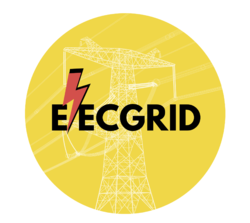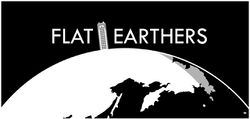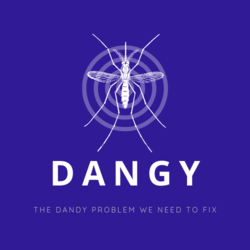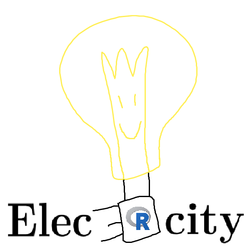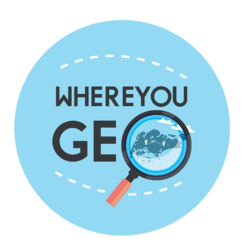Difference between revisions of "Project Groups"
| Line 91: | Line 91: | ||
|[[File:Business_Mafia_Logo.jpg|center|link=BusinessMafia Proposal|250px]] | |[[File:Business_Mafia_Logo.jpg|center|link=BusinessMafia Proposal|250px]] | ||
|| | || | ||
| − | <center><strong>Investigating for | + | <center><strong>Investigating for spatial relationships between Airbnb listing locations and key attractions within Downtown Seattle</strong></center> |
|| | || | ||
Airbnb has been democratic in providing its data access to the public for potential analysis. However, there is a lack of an aggregated platform to distill this mass of data into information that allow Airbnb hosts better understand the demands of the travelers coming into their city. Certain Airbnbs possess higher occupancy rates than others, the factors affecting it also differ from city to city and culture to culture. The reasons for visiting and type of travelers attracted also differ; as certain cities may attract more business travelers seeking comfort, while others attract backpackers looking for an affordable bed and breakfast accommodation. | Airbnb has been democratic in providing its data access to the public for potential analysis. However, there is a lack of an aggregated platform to distill this mass of data into information that allow Airbnb hosts better understand the demands of the travelers coming into their city. Certain Airbnbs possess higher occupancy rates than others, the factors affecting it also differ from city to city and culture to culture. The reasons for visiting and type of travelers attracted also differ; as certain cities may attract more business travelers seeking comfort, while others attract backpackers looking for an affordable bed and breakfast accommodation. | ||
Revision as of 22:16, 18 March 2019
|
|
|
|
|
|
| Team Name | Project Title | Project Description | Project Artifacts | Members | Sponsor or potential users |
|
|
|
With the Singapore's aging population increasing, there has also been a spike in the number residents who require special needs. To ensure that all the residents, with disabilities and mobility issues or elderly at risk, receive adequate healthcare, we aim to analyse the demand and supply of neighbourhood doctors, to effectively allocate doctors to residences. In this project, we aim to find the proximity to each clinic in a residential sub zone, and this study developed a location allocation model for neighbourhood clinics to ensure equitable and efficient access to healthcare services for the elderly in HDB estates. |
Group Member: Debbie Lee Shan Ying, Goh Chun Ming, Tan Guan Ze |
||
|
|
As we speak, Singapore is rolling out its plan for the privatisation of the electricity market. There are currently as many as 12 electricity retailers competing to sell their energy package, and each retailer charges a price lower than the tariff price set by Singapore Power - the de facto energy retailer. These retailers also purchase electricity in bulk from electricity-generating companies instead of producing their own, subsequently selling the resource to their customers. One of the challenges faced by these retailers is the lack of accurate demand forecast for electricity. This is a key issue as a poor forecast of demand for electricity results in the resource being wasted and revenue lost for the company. Our project therefore aims to estimate the total monthly electricity consumption per housing units to provide these electricity retailers a picture of how much electricity is needed in the grid |
Group Member: Edwin Lim Jun Yun, Maegan Joyce Wu, Wong Ming Sen |
|||
|
|
In Singapore, the large majority of the population live in HDB flats. Given the scarcity of land in Singapore, housing prices tend to hold a large price tag as with HDB flats. Buying a HDB flat represents a huge financial commitment that many young adults face as they search for the ideal home with the appropriate price tag to match. As prospective buyers of HDB flats, we would like to investigate the intrinsic value of HDB flats and explain why they are priced as such. We intend to take a geospatial approach to analyze and quantify the different factors affecting the resale prices of HDB flats by both internal and external factors. |
Group Members: | |||
|
|
Airbnb has been democratic in providing its data access to the public for potential analysis. However, there is a lack of an aggregated platform to distill this mass of data into information that allow Airbnb hosts better understand the demands of the travelers coming into their city. Certain Airbnbs possess higher occupancy rates than others, the factors affecting it also differ from city to city and culture to culture. The reasons for visiting and type of travelers attracted also differ; as certain cities may attract more business travelers seeking comfort, while others attract backpackers looking for an affordable bed and breakfast accommodation. With this in mind, our team is delving into the landscape of Seattle, Washington in United States to identity relationships and spatial patterns affecting the occupancy rate of Airbnbs in Seattle. We aim to help hosts better understand the demands of the travelers coming into their city, and how they can therefore increase their occupancy rates. |
Group Member: Cheng Xin Yuan, Fu Weiyu Chloe, Lim Jia Khee |
|||
| GeoSpies |
Project Title |
Abstract (Note: Not more than 350 words) |
Group Member: Student001, Student002, Student003 |
||
| GeoSpies |
Project Title |
Abstract (Note: Not more than 350 words) |
Group Member: Student001, Student002, Student003 |
||
|
Supporting the study of Dengue Fever outbreak through the development of spatial analytical tools for Taiwan |
This project aims to achieve 2 folds: First, it aims to create an analytical solution that allows users to quickly analyze the outbreak of Dengue in Taiwan, facilitating the study of Dengue Fever. The tool will offer historical data of various types for users to work with, including: demographic spread, population density, weather and climate and dengue-prone locations such as water protection areas and industrial district. Second, it aims to provide an analysis discussing the possible reasons influencing the spread of dengue across the difference regions of Taiwan using the developed tool. Through identifying hotspots and studying the transmission of dengue over time, this project will help us better understand patterns and discover strategies on how to curb with epidemics in future & steps to prevent Dengue in Taiwan and similar states. |
Group Member: Ang Kah Eng Jerry Obadiah Tohvan Tan Kai Xiang Terence |
|||
|
|
Visualizing possible causes of geospatial variation in Energy Consumption in Singapore with spatial interpolation techniques |
When it comes to the government’s push for efficient energy usage, most effort is expended on the efficiency of energy sources – e.g. using less carbon-intensive fuels (https://www.nea.gov.sg/our-services/climate-change-energy-efficiency/energy-efficiency/energy-efficient-singapore). However, hitherto, there has been scant statistical analysis on possible causes of inexpedient energy usage by households, with consideration of their varied age structure and the geospatial variation of environmental conditions (e.g. temperature’s effect on energy consumption). Our team sees geospatial analytical tools (such as R) as thus far largely unexploited in exploring the origins of geospatial variation in energy consumption and is thus using spatial interpolation techniques (such as kriging) to provide an app which allows for authorities in Singapore such as the National Environment Agency and Housing Development Board to understand with data-driven evidence the origins of variation in Singapore household energy consumption so as to have more targeted efforts to reduce energy wastage. |
Group Member: Darren Choy, Fu Yu, Silvester Lim |
||
| GeoSpies |
Project Title |
Abstract (Note: Not more than 350 words) |
Group Member: Student001, Student002, Student003 |
||
|
|
|
As more Singaporeans are opting to take public transport for day to day trips, being able to understand the trip patterns of Singaporeans can help to identify interesting insights and these patterns can be used to help improve the environment of Singapore example: building more elderly friendly facilities, more buses services when school is over, etc. Our project aims to provide an application that will help various government sectors like HDB, URA, SLA and LTA to enable better planning and decision making where it will eventually impact Singaporeans in the future. |
Group Members: | ||
|
|
“This is what inequality looks like.” Youyenn Teo’s recent best seller book uncovers the heightened tension on social inequalities in Singapore. It has motivated to delve deeper into the current situations of inequality in Singapore. One way to understand the inequality is to examine the accessibility to many key essential facilities for an ordinary Singaporean living in Housing Development Board units. The aspect of accessibility to look into includes the distance to healthcare services, transportation infrastructure, schools, parks and hawker centres for all HDBs in different planning subzones. We hope to develop an accessibility study tool for urban planners to better strategize the development of new facilities which ensures greater equality for an ordinary Singaporean. For instance, how would Land Transport Master Plan 2040 effectively improve the existing accessibilities to transport facilities. |
Group Member: Shubham Periwal, Zhuo Yunying (Kaelyn) , Raynie Moo |
|||
|
|
|
In recent years, the Ministry of Education (MOE) has been appointing new mergers between schools and relocating them. These schools include primary schools, secondary schools as well as junior colleges. The merging and relocation of schools would mean lesser schools in each neighbourhoods. This would affect the students' accessibility to certain schools, especially those in primary schools where parents need to send their children to schools. With more upcoming mergers of school by MOE, it is important for the government and schools to know the inconvenience in terms of time and distance travelled caused by the mergers and implement measures to ensure that these areas have better accessibility. Thus, our team aims to identify the HDB residential areas that are affected due to the merger of schools. |
Group Member: Brendo Austin, Tan Peng Chong, Goh Li Na Rebecca |
||
|
|
|
Efforts by the Singapore Traffic Police in educating the public on road safety over the years have decreased the number of Fatal Accidents in Singapore by 15.7% in 2017 as compared to 2016 (Chua, 2018). Despite this improvement, accidents involving motorcyclists and elderly jaywalkers were highlighted as key concerns by the Singapore Traffic Police in 2017. This is because motorcycle accidents still accounts for more than half of the traffic accidents in 2017 and the number of elderly jaywalkers road fatalities are on the rise. As such, our project aims to analyse potential factors that influence road accidents' hot spots and cold spots, such as weather, types of vehicles and road conditions. Information on where, when and what variables have the greatest influence on traffic accidents provide direction for relevant authorities to modify roads or signages to improve road safety, with focus on motorcyclists and senior citizens. The use of spatio-temporal allows for more efficient allocation of resources, if necessary, at selected time periods. Network-constrained variants of Kernel Density Estimation and other analyses will be conducted using datasets from Leeds City Council and Ordnance Survey and linked to Singapore context. |
Group Member: |
Singapore Police Force (Traffic Police) & Land Transport Authority (LTA) | |
|
|
|
In recent decades, modeling housing prices has become a hot topic among economists, planners, and policymakers due to the significant role of properties in household wealth and national economy. In Singapore, public housing accommodates more than 80% of its citizens and citizens either choose to buy a new Housing Development Board (HDB) flat or purchase a HDB resale flat, second-hand flats with less than 99 years left on the lease. Our project will focus on modelling the HDB resale flat prices which are shaped by market forces. As many previous hedonic pricing models that uses linear regression fails to take into account spatial variations among the observations in the local surroundings, our project will be building a modeling tool based on the geographically weighted regression (GWR) model to analyse the effects of spatial variation on housing prices. Our application will provide users with the option of using a mixed geographically weighted model to account for both local and global variables. At the same time, users can also choose to upload a geo-coded data set if they wish to include new spatial attributes into the GWR model. We hope that this modelling tool will help users more accurately investigate the impact of variables on HDB resale flat prices in Singapore. |
Group Members: |
| Team | Members | |||||||||||||||||
|---|---|---|---|---|---|---|---|---|---|---|---|---|---|---|---|---|---|---|
| Renting Inequality | Shubham Periwal | Yunying Kaelyn | Raynie Moo | - | - | - | ||||||||||||
| BURP | Tan Peng Chong | Brendo Austin | Goh Li Na Rebecca | - | - | - | ||||||||||||
| Elec3city | Darren Choy | Fu Yu | Silvester Lim | - | - | - | ||||||||||||
| WhereYouGeo | Chan Huang Suan | Sheryl Yeo | Vincent Koh | - | - | - | ||||||||||||
| Signal | Ang Jia Ying | Sheryl Chong Man Er | Tan Yan Lin | - | - | - | ||||||||||||
| Neighbourhood WatchDocs | Debbie Lee Shan Ying | Goh Chun Ming | Tan Guan Ze | - | - | - | ||||||||||||
| GeoEstate | Cerulean Koh Shiliang | Daniel Ang | Tang Hui Xin | - | - | - | ||||||||||||
| Business Mafia | Chloe Fu Wei Yu | Cheng Xin Yuan | Lim Jia Khee | - | - | - | ||||||||||||
| EzSell | Lim Yan Hong, Patrick | Shi Jianrong | Daniel Chin Wen Kai | - | - | - | ||||||||||||
| Dangy | Ang Kah Eng | Jerry Obadiah Tohvan | Tan Kai Xiang, Terence | - | - | - | ||||||||||||
| FLATearthers | Benjamin Ng Wei Xian | Yong Yong Qing | Goh Mi Shan, Brittany | - | - | - | ||||||||||||
| ELECgrid | Edwin Lim Jun Yun | Maegan Joyce Wu | Wong Ming Sen | - | - | - | ||||||||||||


